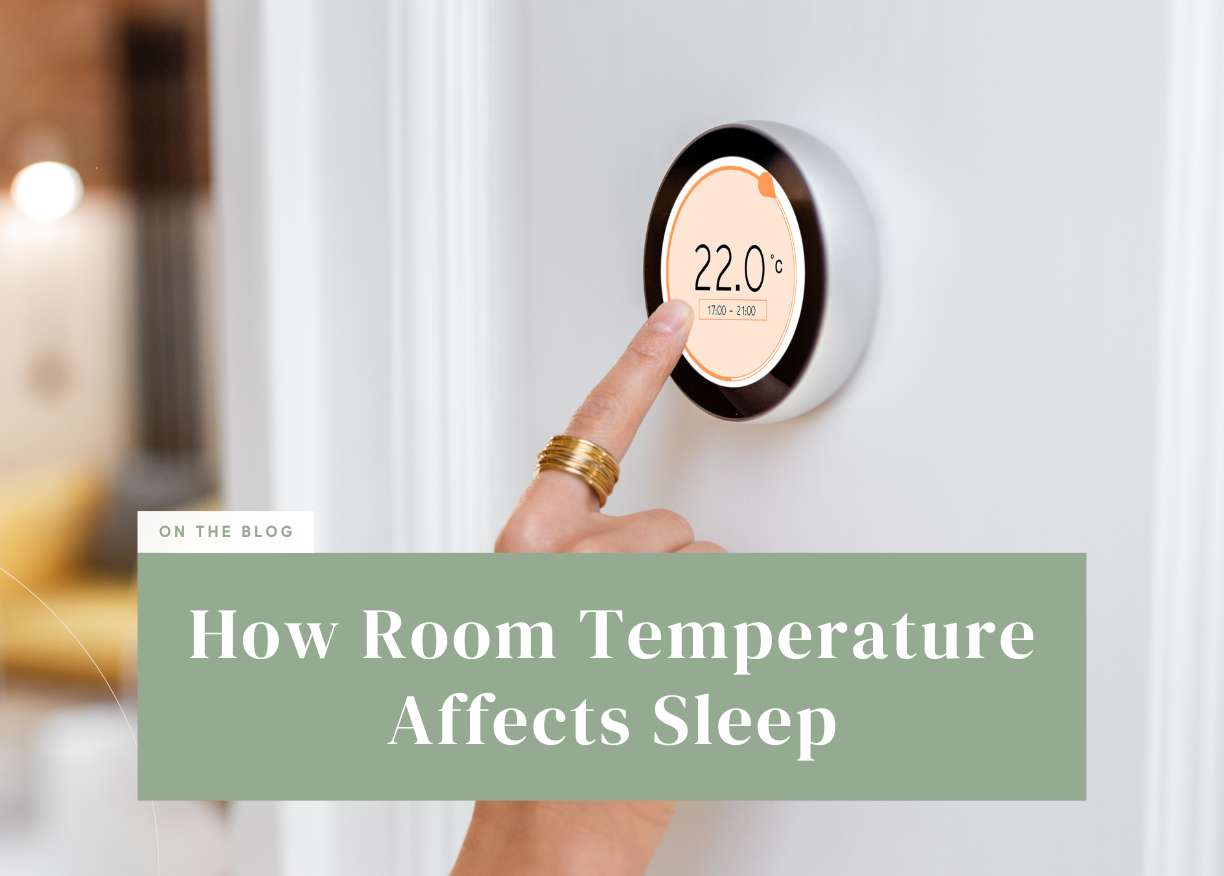How Room Temperature Affects Sleep
You toss. You turn. You flip the pillow to the cool side.
Then you pull the blanket back up when you get cold again.
Sound familiar? You’re not alone.

Temperature might be the most underestimated factor in how well—or how poorly—you sleep. And getting it right can change everything about your nights.
Why Temperature Matters So Much
When you fall asleep, your body temperature naturally drops. It’s part of your internal sleep signal.
If your room is too warm, that cooling process gets interrupted—and your body struggles to reach deep, restorative sleep.
If it’s too cold, you’ll shiver, tense up, and wake frequently.

The sweet spot? Most studies say between 60°F and 67°F (15°C–19°C)—cool enough for your body to relax, warm enough to stay comfortable.
What Happens When It’s Too Warm
Overheating doesn’t just make you sweaty—it fragments your sleep.
You’ll wake more often, get less REM sleep, and spend less time in the deep, slow-wave stage your body uses for repair.

Even mild heat can raise your heart rate and make dreams shallower. That’s why many people wake up feeling tired even after a “full” night of rest.
What Happens When It’s Too Cold
Cold isn’t as disruptive as heat, but it still matters.
If your extremities get too chilly, your body tenses up to preserve warmth, which prevents full relaxation.

The result: shorter deep sleep and that half-awake, uncomfortable feeling where you can’t quite get cozy.
How to Keep the Temperature Just Right
-
Set your thermostat lower at night—ideally around 65°F (18°C).
-
Use breathable bedding and moisture-wicking sheets.
-
Avoid heavy comforters that trap heat.
-
In winter, use layers you can easily adjust instead of one thick blanket.
-
Keep air flowing with a fan or slightly open window.

The Comfort Combo That Helps Most
Your sleep setup should work with your body’s natural cooling rhythm.

🌿 Honey Hybrid Organic Mattress: Breathable latex and cotton layers let air move freely, preventing heat buildup.
🌿 Bamboo Sheets: Naturally cooling, moisture-wicking, and silky soft—ideal for maintaining the perfect microclimate.
🌿 Adjustable Base: Improves airflow and circulation; elevate your legs or head slightly for maximum comfort in any season.
Together, they make your sleep environment temperature-neutral—never too hot, never too cold.
Final Thoughts
Room temperature doesn’t just affect comfort—it affects biology.
A slightly cooler room helps your body release heat, relax muscles, and slip into deeper sleep faster.
So the next time you find yourself tossing in the night, skip the sleep aids and check the thermostat.
Sometimes, the simplest change can make the biggest difference.




